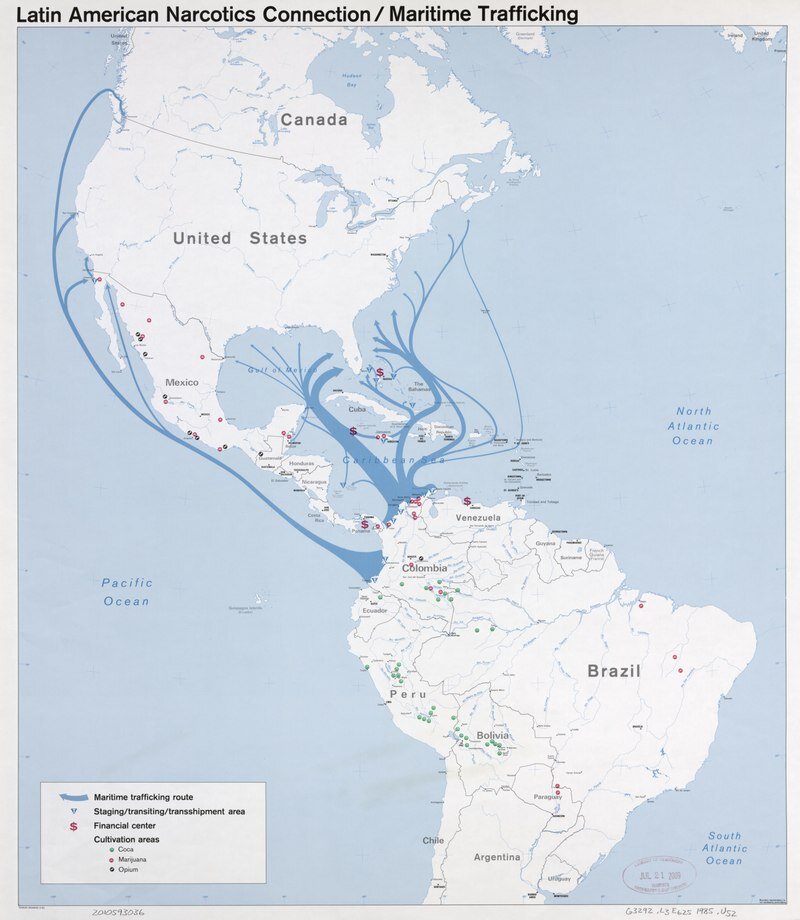Latin Analysis: Trouble in (Mexican) Paradise?
scibak
For many years now, whenever the economic development of Latin America is being reviewed, Mexico is one of the countries that inevitably comes to mind. Indeed, the North American country has, historically, shown some of the highest economic growth rates of the continent, as well as it has had an ambitious approach when it comes to international trade agreements. One of the regions within the nation which has grown increasingly industrialized and, consequently, has gained much political and economic importance, is the south-east region; particularly that of Cancún, Quintana Roo. Due to this, the current Mexican president, Andrés Manuel López Obrador (AMLO), has promised to make significant investment (and build a Mayan Train) such that Cancún can keep on growing and cascading economic benefits for the nation.
Nevertheless, during the last few years, criminality and violence have enormously risen in the region, and hence, have caused great political and economic concern.
When did it all start?
Cancún has been a prosperous region due to its geographical position that allows for strategic trading, as it is an important zone for the import and export of goods. However, experts have claimed that during the 90s, criminal groups and gangs also wanted to take advantage of Cancún’s advantageous position to traffic illegal merchandise – particularly drugs. Some of the cartels which mainly operated within the area were Los Zetas, del Golfo, Sinaloa, and Jalisco Nueva Generación – some of the most dangerous and powerful of the continent.
Quintana Roo became such a salient zone for illicit activity, that it even became popularly known as “the drug Caribbean route” given that it was a key area to transport narcotics coming from South America to North America. One of the main strategies used by Drug lords at the time was commonly known as “bombarding”, as drug packages were dropped from the skies into the sea. Additionally, given the convenient location of Cancún, it also became a meeting point for Mexican drug lords to meet with South American and Asian criminal cartels.
Source: Library of Congress
Additionally, as Cancún grew as a popular destination for young tourism, it also became a high-demand area for drugs, which increased the social and economic power of the drug cartels in the region.
Accordingly, the alarming rise of criminality within Quintana Roo, also had an important impact on gender violence rates, such that Cancún has become one of the most dangerous cities in terms of registered raping and femicides. The situation on this matter has become so grave, that a national “gender alert” was proclaimed. Consequently, in the hopes of reducing violence against women, street-security forces have been increased. Nevertheless, said measures to reduce criminality have caused much polemic, as Mexicans accuse military and police forces of attacking peaceful protestors and citizens on the streets.
Solving the problem
Many Mexican heads of state and governors have indeed tried to re-establish the peace at Quintana Roo. Former Mexican president, Felipe Calderón, particularly focused on dismantling drug cartels in the area during his “war on drugs”; and many experts have stated that he indeed weakened important groups, like Los Zetas. Despite that, the problem was not completely solved and, during the last years, the situation started to aggravate once more.
Indeed, given that much of the economic growth of Mexico depends on the economic and social development of Cancún, the ongoing violence poses a threat to the entire country. This is so, not only because the increasing violence has an impact on Cancún’s tourism – as it is the strongest of the country and has already been hit severely due to the COVID-10 outbreak – but also because Quintana Roo has been a focal point for Foreign Direct Investors. Thus, it is needless to say that the rise in criminality has an opposite effect on the trust of international investors.
Circumstances are worrying, particularly for president AMLO, as he has been using a considerable amount of public funding to build the Mayan Train and to keep fostering international investment in the region. Accordingly, there have been political meetings amongst national and local authorities, such that new strategies can be developed to reduce criminality as soon as possible. Additionally, these meetings have also been carried to reduce previous social uncertainty, given that, during the last weeks, politicians had been publicly condemning the rising violence, yet, many focused their speeches on finger-pointing several authorities and neglecting any individual political responsibility on the matter. Hence, calling the attention of Human Rights organizations and causing severe unrest among the Quintana Roo citizens.
To-date shootings among different drug cartels and police forces keep being the order of the day, which also keeps causing social unrest of a population that is growingly striking the streets to demand the government to guarantee protection for its citizens.
The ongoing events keep calling the attention of the international community and transnational institutions, ad a restoration of peace is not expected to occur soon. That being so, Cancún’s positive forecasts for economic development are not very optimistic. Without a doubt, this is a key issue that the government of Mexico should focus on to avoid the complete loss of investor’s trust and minimize the economic impact this issue could have in the Latin American region.


